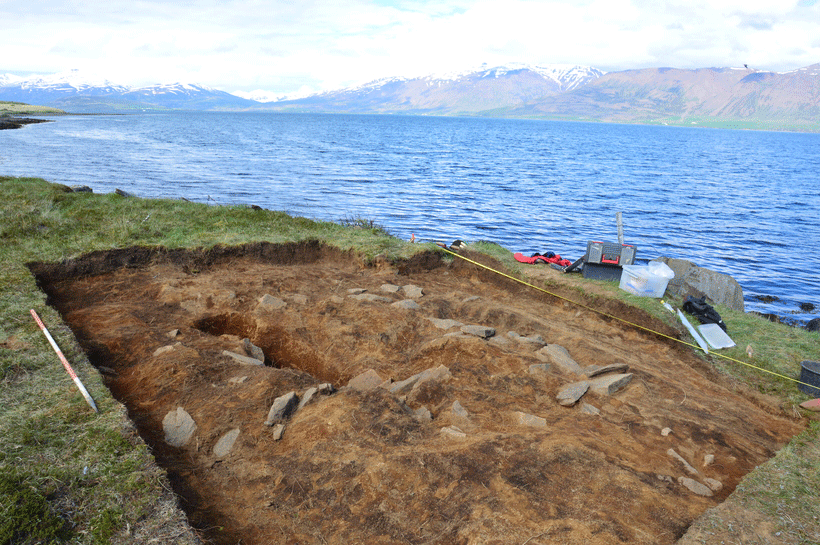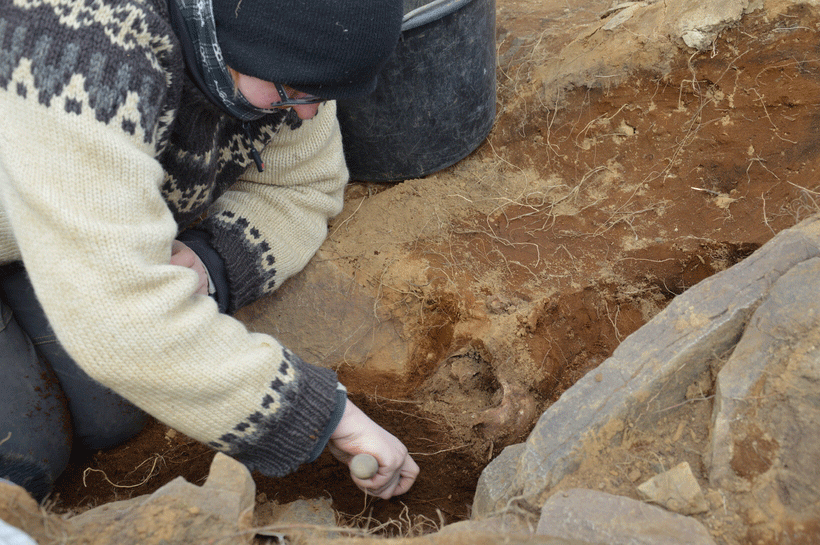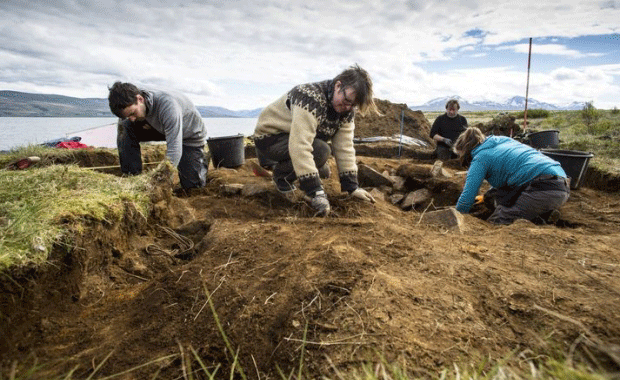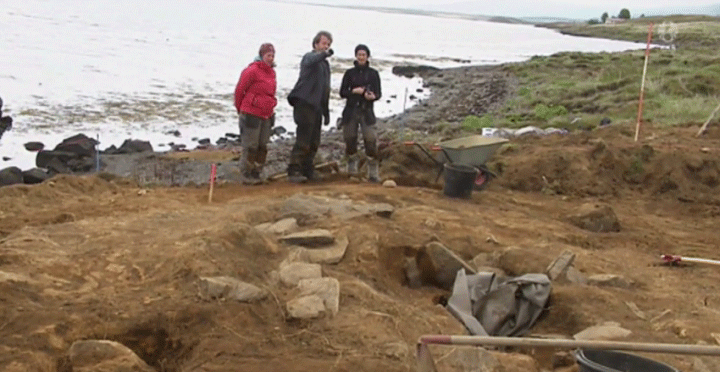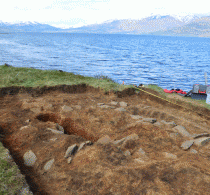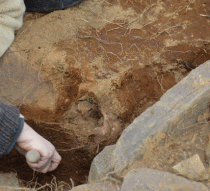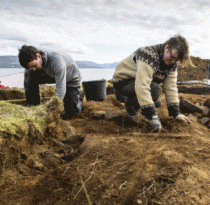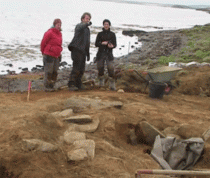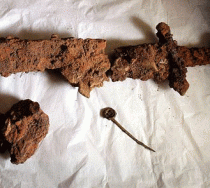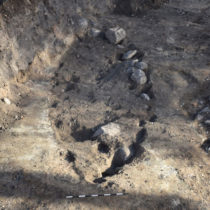Archaeologists in north Iceland have discovered boat burials at an excavation site dating to the Viking Age. The first grave was discovered in Eyjafjörður fjord, north of Akureyri, last week. In the following days, archaeologists discovered in total four boat burials, all from the 10th century.
Experts unearthed the remains of a ship, in which a wealthy chieftain was probably buried, with some of his possessions on Tuesday last week. Among the findings were a sword and the remains of the person’s dog. The next day another boat was discovered at an adjacent grave.
The grave dates back to the 9th-10th century and is located at a site which was probably of great importance during the Viking Age, since it is located a few hundred metres north of Gaseyri, the main trading post in the area at the time.
The very area is called Dysnes, which derives from the ancient word dys, meaning burial mound; the boat grave is at a spot named Kumlateigur, kuml also being an ancient word, meaning burial. A nearby hill is named Kumholt, which can be translated as “burial hill”. Dysnes can be translated as “burial ness” and Kumlateigur as “burial stretch”, hence specialists believed more than one grave are located at the site. Besides, another boat burial was discovered at Kumholt, south of Kumlateigur about eleven years ago, although the grave had been probably been looted at some point and therefore no significant artefacts were found.
The new discovery is special because although boat burials were not unusual among the Vikings not that many have been unearthed in Iceland. Perhaps timber was too valuable at the time in the area. However, the chieftain or chieftains buried at the site must have been quite wealthy. Also, most boat burials that have been discovered in the past had been looted at some point. The bones and the sword found at the site were found near the surface, which means that looters hadn’t had the chance to rob that grave.
Archaeologists found only part of the boats since a great part of them has been washed away by the ocean waves. The burial site is also being eroded by the sea, therefore specialists are racing against time.
Excavations have just started, on the occasion of a port being constructed nearby. The works will not affect the excavations, though, experts say. The fact that so much has been found in so little time makes specialists believe there will be much more discovered in the future.
